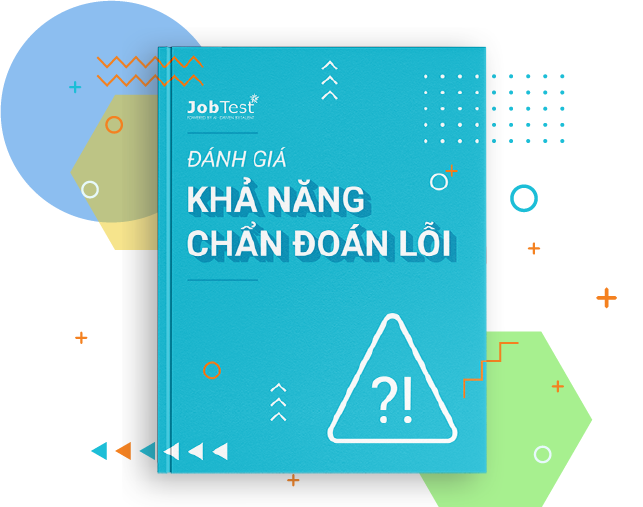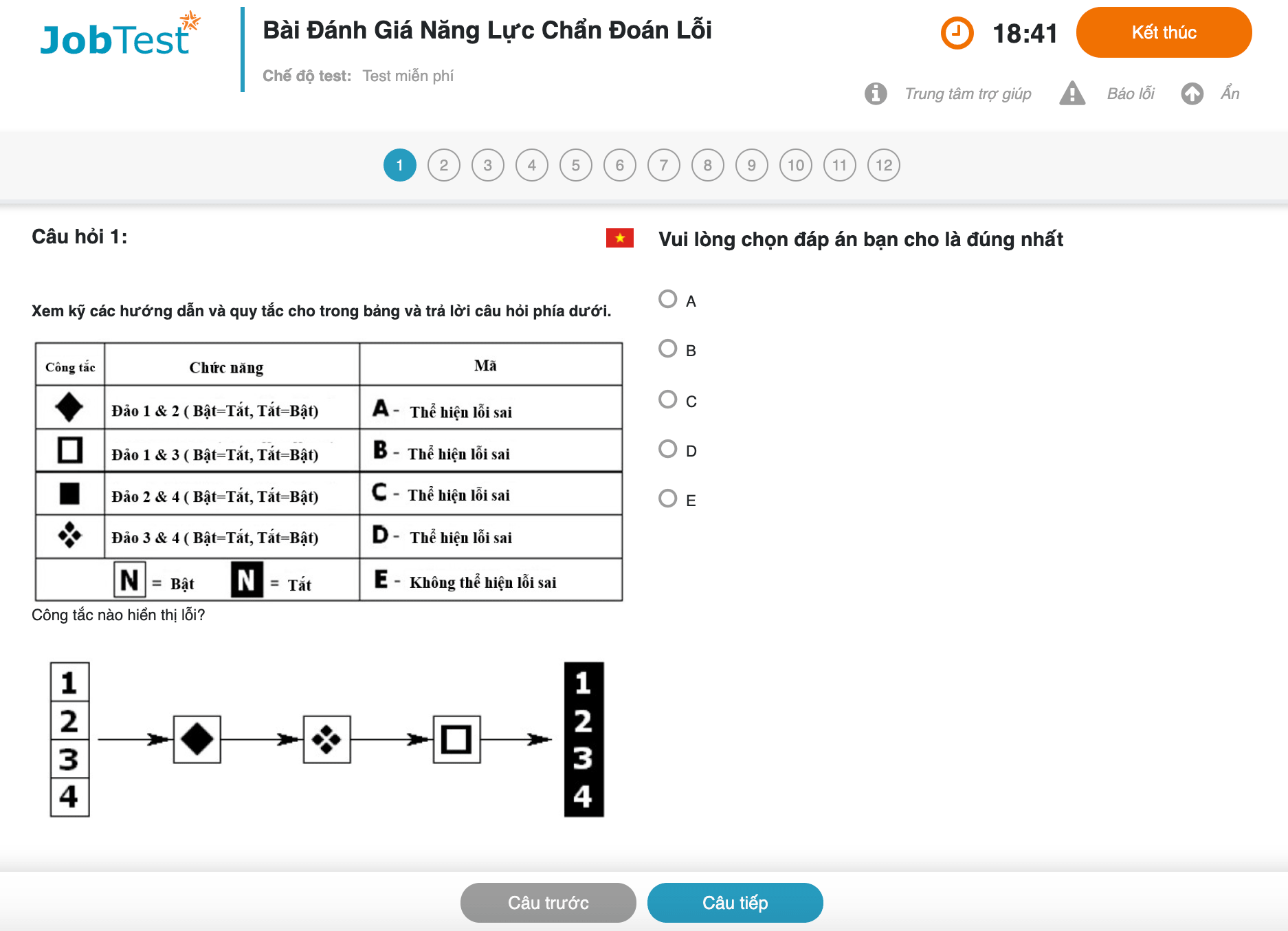
Faults Diagnosis Test
Fault Diagnosis Test (also known as fault finding aptitude tests) - These tests are used to select technical personnel who need to be able to find and repair faults in electronic and mechanical systems.

What is Faults Diagnosis ability?
Fault Diagnosis ability measures how quickly and accurately you can detect technical errors in electronic circuits, electrical circuit diagrams, and many more.
You'll need not only professional knowledge but also a sharp analytical mind to succeed. In areas like engineering and mechanics, the capacity to diagnose defects has been identified as an important criterion, and it is expected to enhance other fields as well.
The application of Fault Diagnosis ability
Not everyone owns a Fault Diagnosis competency. In order to attain one, you need to have the skills to detect, diagnose, and correct technical errors correctly.
Moreover, a skilled fault diagnosis person can handle preventive maintenance well for electronic and mechanical systems and machines. Besides, thanks to their observational and analytical minds, they can also take part in recommending procurement methods with high-cost efficiency.
With all the criteria mentioned above, employers are paying more attention to evaluating this competency. However, this process can be complicated just by interviewing. By that, the Fault Diagnosis Test is provided to the candidate as an evaluation round.

The Fault Diagnosis Test
This is a multiple-choice assessment designed to measure the ability to approach, detect, and fix errors logically in technological and engineering systems. It includes 12 questions in the form of images and symbols used in a variety of switching devices.
The Fault Diagnosis Test will help evaluate errors in other competencies such as error checking and logical reasoning, along with other data to find the most appropriate fixing methods.
The practices will not only help you to self-evaluate your competencies but also assist in figuring out the most effective ways to improve and enhance them.






















 Talent Assessment
Talent Assessment 
